Asus ZenFone was once a dominant force in the Indian smartphone market, but Xiaomi took over the mantle, assaulting the competition with ultra-cheap phones that actually offered great value.
The Taiwanese giant is now steadily making its comeback to the Indian shores with one new smartphone at a time, which is the ZenFone Max M1 for the affordable budget segment.
The ZenFone Max Pro M1 (Rs. 14,999) and ZenFone 5Z (Rs. 29,999) have been great successes for Asus over the past few months and the company is now looking to stick to the same strategy with the ZenFone Max M1 (Rs 7,499), offering you an almost impeccable smartphone offering at competitive prices.
I’ve been using the Asus ZenFone Max M1 for around a week now and I can tell you whether its on-paper specs translate to great real-world usage as well. So, what are we waiting for, let’s dive in and look at Asus’ latest budget smartphone offering:
What’s in the Box
The ZenFone Max M1 comes in a simple cardboard box, which like its brethren, is covered in hues of blue and a slide-out tab for instant access to the contents of the box. Here’s everything you’ll get in the box:
- Asus ZenFone Max M1
- Sim Ejector Tool
- Charging Adapter
- USB-A to micro USB Cable
- User Manual
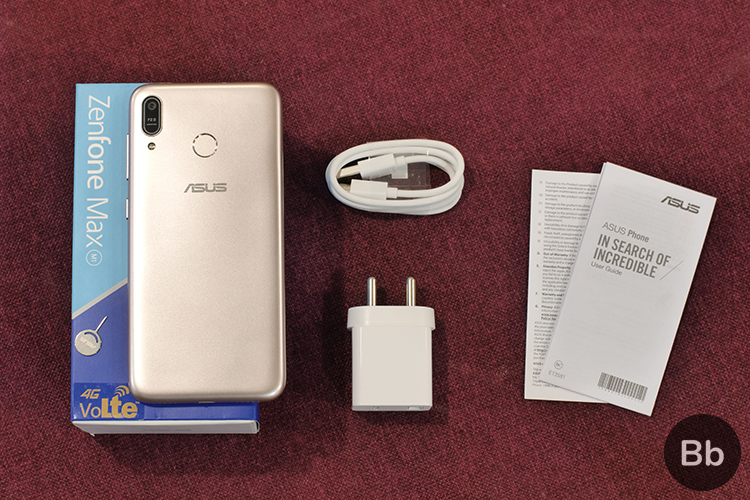
The inclusion of a soft silicone case would’ve been a nice addition, but this is all you get.
ZenFone Max M1: Key Specs
Next up, let’s take a quick look at the specs table for the ZenFone Max M1 before we dive into my experience. The device comes only in one configuration, with 3GB RAM and 32GB storage, backed by the Snapdragon 430 SoC, which sounds good enough on paper for the price segment. Check out the key specs right here:
| Dimensions | 147.3 x 70.9 x 8.7mm |
| Weight | 150 grams |
| Display | 5.45-inch HD+ IPS LCD |
| Processor | Snapdragon 430 |
| RAM | 3GB |
| Internal Storage | 32GB |
| Rear Camera | 13MP (f/2.0) with PDAF, LED flash |
| Front Camera | 8MP (f/2.2) with LED flash |
| Operating System | Android 8.0 Oreo-based ZenUI 5.0 |
| Battery | 4,000mAh |
| Sensors | Accelerometer, E-Compass, Proximity Ambient light, Gyroscope |
| Connectivity | 802.11 b/g/n, Bluetooth 4.0, A-GPS, GLONASS, microUSB, 3.5mm audio jack |
Design and Build Quality
The budget segment doesn’t really see premium build, however, the ZenFone Max M1 looks very similar to the ZenFone Max Pro M1, and retains the metallic-gold color of the body.
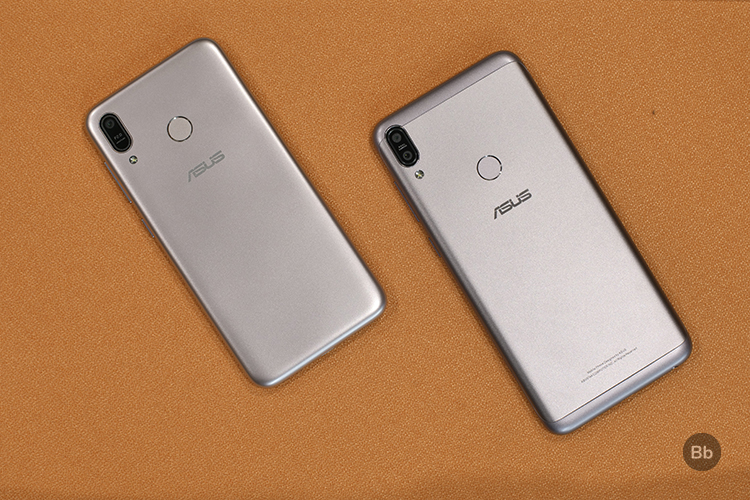
ZenFone Max M1 comes in a polycarbonate build, with a metallic finish and rounded corners, that gives the phone a comfortable grip and in-hand feeling. It’s a handy device which I can easily use with one hand and it doesn’t slip away like most glass phones these days which is another plus.
ZenFone Max M1 feels extremely lightweight, despite the massive 4,000mAh battery.
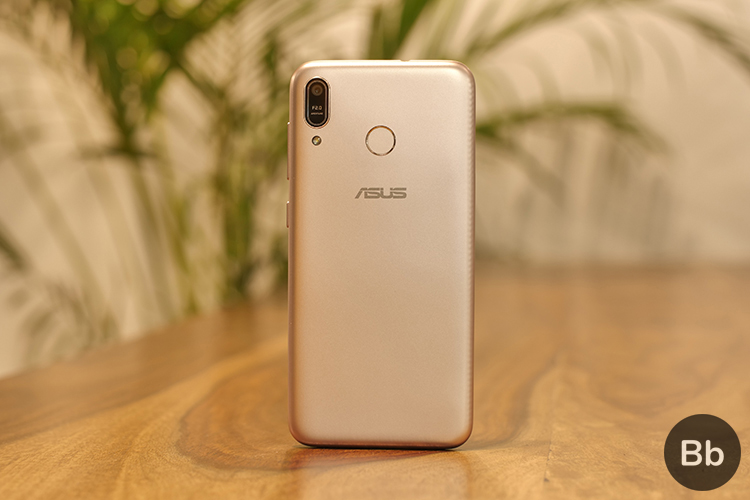
The ZenFone Max M1 includes only a single rear camera and a fingerprint sensor that’s placed at the ideal position. It isn’t the fastest sensor out there and you only get haptic feedback when using the wrong finger but none when using the correct one. This is something we had noticed on the ZenFone Max Pro M1 as well.
One of my favorite things about the ZenFone Max M1, however, will have to be the textured power button that makes it easier to differentiate from the volume rockers. All buttons feel good to the touch, are quite tactile and I like it.
There’s also the notification LED on the front, a micro-USB charging port at the bottom, and a 3.5mm headphone jack on the top side.
Display
Turning our attention to the front, the ZenFone Max M1 features a 5.45-inch HD+ IPS LCD screen with an 18:9 aspect ratio and a display resolution of 1440 x 720 pixels. This bumps up the screen-to-body ratio to 82%, but with plenty of bezels around the screen.

This is similar to the display on most budget phones, including the Redmi 6, in this price segment. The display on the ZenFone Max M1 is a bit on the cooler side in terms of color tone, with decent color reproduction, adequate contrast, as well as sunlight legibility. It’s one of the better screens for the price, so I don’t really have any complaints here, but don’t expect anything like an AMOLED display.
Cameras
Coming to one of the most important features that will drive your buying decision, the ZenFone Max M1 features a single 13MP (f/2.0) sensor on the rear and an 8MP (f/2.2) selfie camera. It sounds suitable for an affordable mid-ranger, however, let’s check out some camera samples in different lighting conditions to know better.
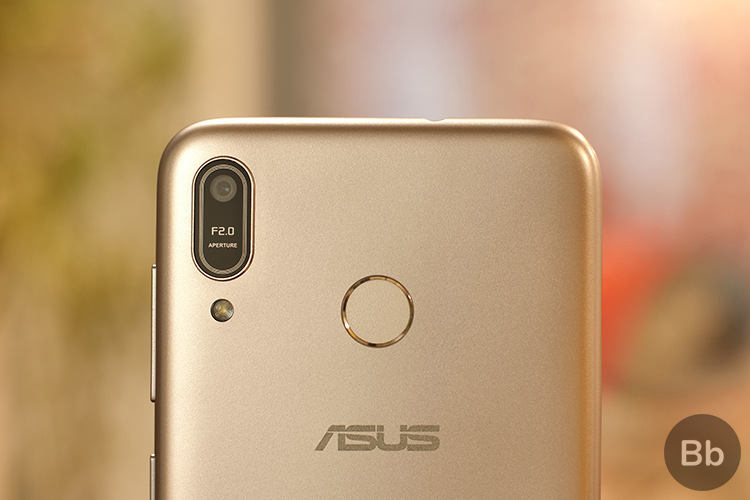
Daylight/Good Lighting conditions
In broad daylight and good lighting conditions, the Zenfone Max M1 performs quite well and is able to capture the colors and depth of the object but often punching up the colors which make the photos look saturated and over-sharpened. The dynamic range here may not be up to the mark but one cannot complain when they’re getting social media-ready photos right off the bat.
My biggest issue with the single rear shooter on the ZenFone Max M1 is that it sometimes finds it hard to handle the light coming to the sensor, thus, overexposing the images. You can see this in the shots of the ruins and the car above.
Night-time conditions
ZenFone Max M1 does perform decently in low-light situations as well, impressing me with the highlights and details captured – instead of just letting in a ton of light. They may not be on par with the Redmi 6, which gives you more color accurate and sharp images in low light, but they’re good enough for the price. They’re a bit on the cooler side and you’ll easily see noise when zooming in.
Selfies
Coming to the front camera, the selfies captured using the ZenFone Max M1 were better than my expectations. They weren’t soft, so the camera is not aggressively applying any beauty mode to your skin. It captured a decent amount of detail both in daytime and low-light conditions.
Portraits
Every smartphone camera needs to have portrait mode these days as a USP, but the Max M1 doesn’t have any secondary sensors on the front or rear to capture depth information. Asus is doing the right software magic as edge-detection, blur, as well as details captured in these photos is just great. My biggest complaint will have to be the over-exposed lights and whites in the photos.
You can see our ZenFone Max M1 and Redmi 6 shootout right here, but it’s safe to say that the Redmi 6 has better cameras.
As for the video capabilities of the ZenFone Max M1, it can shoot up to 1080p (FHD) videos at 30fps and as you can see below, the video quality looks average but good enough for its price point. There’s no form of stabilization on board here and we weren’t expecting it to begin with.
Software
Since Asus surprised us with an almost stock Android experience on ZenFone Max Pro (M1), we expected the Taiwanese giant to follow along the same lines and provide us, budget users, with a handy-dandy device with stock Android. However, ZenFone Max (M1) comes integrated with the company’s ZenUI 5.0 skin on top of Android 8.0 Oreo.
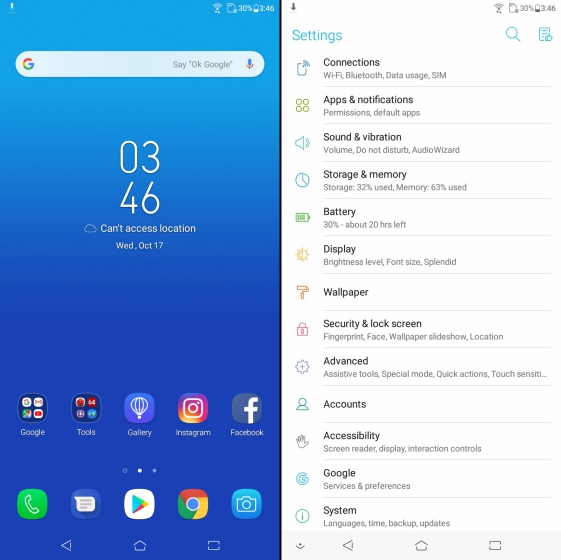
As seen in the screenshot above, ZenUI 5.0 now looks less bloated and feels lighter than before but it closely resembles Samsung’s Experience UI if you pay attention. The quick toggles menu offers you plenty of tiles and features. You also get advanced features like twin apps, Game Genie (similar to Samsung’s Game Launcher) and ZenMotion touch gestures as well.
Asus also touted “Face Unlock” to be one of its highlight features this time around and I think their claims were justified. Face Unlock on ZenFone Max M1 works quite well and is decently fast (although not OnePlus fast).
Performance
Asus may be trying to take on the popular Redmi series with the Zenfone Max M1, but it feels like a half-hearted attempt, when it comes to the performance. The device is powered by Qualcomm Snapdragon 430 chipset, paired with 3GB of RAM and 32GB of internal storage, which is certainly a decent combination, but it doesn’t translate into satisfactory real-world usage.

I have been using this phone for a week now, and while the performance hasn’t been sub-par, it’s not quite up to mark either; and even though ZenUI is now free of bloatware, the heavy animations sometimes bog down the experience and make it feel like a slower Samsung phone. But you won’t find too much stutter or lag during basic tasks like chatting or checking social media.
ZenFone Max M1 can handle your daily lightweight tasks with ease, be it watching Netflix or calling your peers, with satisfactory memory management. The 3GB RAM doesn’t get used up immediately and you can easily have up to 10 or more apps open in the background, provided they are not taking up more and more RAM, in which case they will be killed by the system. The device does suffer under heavy workloads, especially gaming or multi-tasking. This is almost similar to what we experienced with the Redmi 6 too, which is not the swiftest phone.
The device begins to stutter and frame drops are easily noticeable when using apps simultaneously, or when jumping back and forth between two apps with refreshing content.
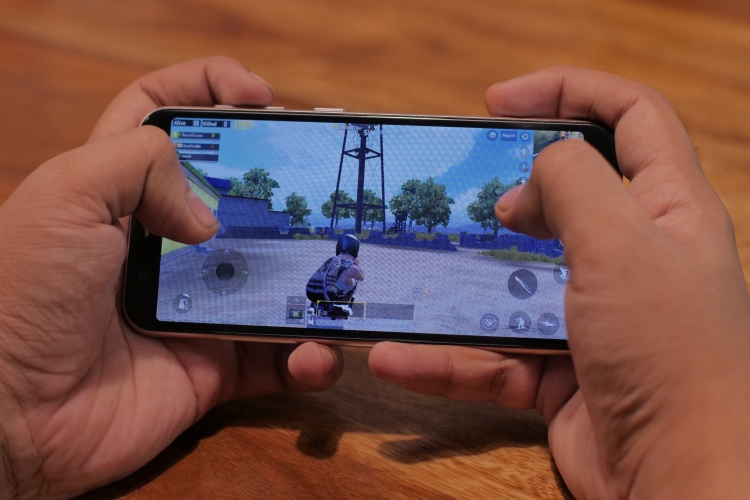
Let’s move on to some heavy-duty games such as PUBG, Shadowgun Legends, and NFS: No Limits. All of the games automatically assumed the lowest setting but ran decently. I did expect stutters and frame drops in these games, and there are frame drops for sure, but the bottom line is that you can play heavy games on this phone if you’re okay with sacrificing the graphics quality.
For gaming, the phone is suitable for endless runners like Temple Run and Subway Surfers. These ran well and didn’t show any major frame drops or jitters – except for the loading screen.
Well, if that clarified most of your doubts then well and good, but if you’re someone who likes to rely on and compare benchmark scores, you can take a look at our AnTuTu and Geekbench results below.
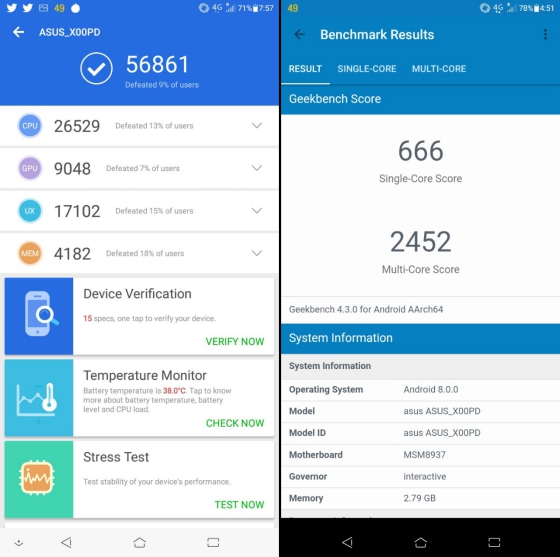
The Redmi 6 scores higher in both tests, with the single-core and multi-core Geekbench scores being 825 and 3700 respectively, but I found the ZenFone Max M1’s performance to be much better in everyday situations.
Connectivity
In terms of connectivity, the Asus ZenFone Max M1 scores points with the inclusion of a triple-slot tray on the device, allowing you to use two nano SIM cards and a micro-SD card simultaneously.
This means you can continue to use both your mobile numbers and expand storage up to 256GB via a microSD card, which is all good, but the lack of dual voLTE comes as a major disappointment. I was only able to use either Jio or Airtel VoLTE network at one time instead both of them being active simultaneously.
ZenFone Max M1 doesn’t support dual VoLTE whereas the Redmi 6 does.

Additionally, you get your usual set of connectivity options like Wi-Fi 802.11 b/g/n, Wi-Fi Direct, Bluetooth 4.0, A-GPS, GLONASS and more. I didn’t face any issues connecting my Mi Band 3 to the ZenFone Max M1 and the device to my Wi-Fi network (2.4GHz or 5GHz), with consistent upload and download speeds. Connectivity isn’t going to be a concern with the ZenFone Max M1.
Audio and Telephony
I have been using my Airtel SIM in ZenFone Max M1 for the past week and my experience has been great to date. I didn’t notice any connectivity issues and the calls sounded quite clear, thanks to the impressive noise cancellation via the secondary microphone on the left edge.
Asus still needs to work on its audio output and volume steps, but most users should be satisfied with this.

The ZenFone Max M1 includes a single bottom-firing speaker and it does get pretty loud at high volumes, with good sound clarity and treble. My biggest qualm with ZenFone devices launched this year is the lack of proper volume steps and ZenFone Max M1 has the same issue, where the sound ramps up too fast and too loud when reaching close to its peak, but remains almost inaudible at low volumes.

Asus has also included an ‘Outdoor mode’ setting in the volume drop-down, which does affect the audio output by significantly punching up the output (though it’s not the best) but I commend the company for trying to provide such a feature in a budget smartphone. They’ve added an ‘Audio Wizard’ as well, allowing users to adjust the output based on the scenario such as outdoor, gaming, music, and more, but I didn’t really notice a significant change in the sound quality.
Battery
The battery is the highlight of the ZenFone Max M1. Staying true to its ‘Max’ branding, Asus packed a huge 4,000 mAh battery in this device but you wouldn’t feel the weight. This is something I’ve come to appreciate over the past few days.
With only a microUSB port and no quick charging support on board, it takes about 115 minutes (approx 2 hours) for the device to charge completely, i.e go from 10% to 100% using a 10W charging adapter. This is good but I’d want phone makers to take the initiative and include USB-C and fast charging on their affordable devices as well.

Further, I found the device only offered a screen-on-time of around 5 hours for low-medium usage where I usually found myself texting/ calling using WhatsApp and watching content on Netflix or YouTube on the way back to home. This battery usage was recorded over a duration of about 36 hours, which is just awesome!
The stand-by time here is quite impressive as it can just be lying down there for a couple of days with an active connection. However, I like nifty additions like this one, where ZenUI shows the estimated time for which you can use your device, i.e. the amount of battery juice left.
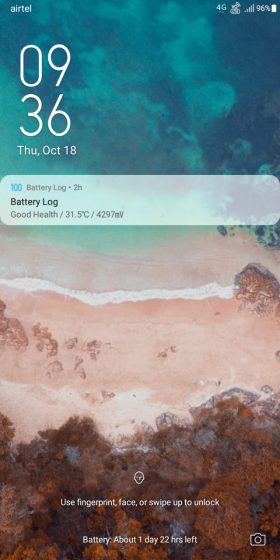
ZenFone Max M1: Should You Buy or Ignore?
This wraps up everything you need to know about the ZenFone Max M1, which has shaped up to be another impressive device from Asus’ camp in the budget segment. The Taiwanese giant is eager to capture a piece of the smartphone market in India and with the budget segment seeing high growth, the ZenFone Max M1 has been positioned well to take on the competition. It offers users a good looking phone at a great price, and with plenty of features.
The important question now is, should you buy the Asus ZenFone Max M1 for Rs. 7,499? Well, there’s no way I wouldn’t recommend the ZenFone Max M1 to someone looking to buy a premium-feeling and lightweight smartphone with a massive battery in the sub-Rs 8,000 price bracket.
However, if you’re torn between the ZenFone Max M1, Xiaomi’s Redmi 6 (Rs 7,999), and the Realme C1 (Rs 6,999), then I would, without a doubt, suggest you to get the Realme C1 because it offers you a faster processor, a bigger notched display, and 2 rear cameras but you will have to live without a fingerprint sensor.
Pros:
- Great build quality
- Crisp, bright display
- Great battery life
- Portrait mode
- Fast Face Unlock
Cons:
- Sub-par performance
- Average cameras
- No dual-VoLTE support
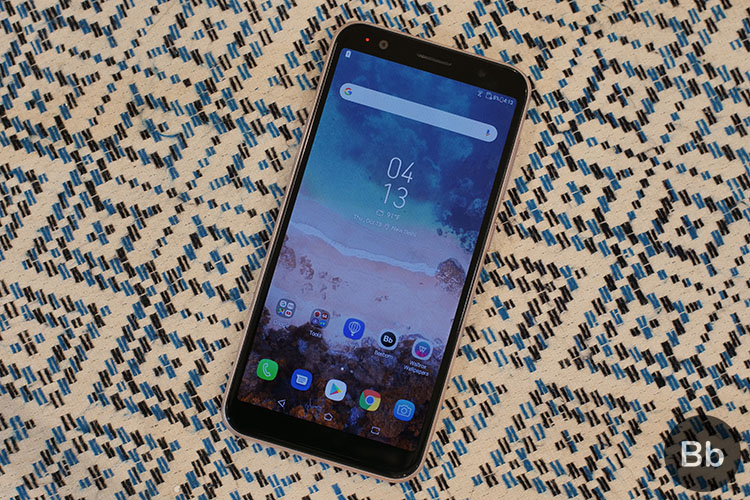
SEE ALSO – ZenFone Max M1 vs Redmi 6: Gunning for Xiaomi, Again!
ZenFone Max M1 Review: Pretty Good, But Falling A Step Short
Running with the success of its ZenFone Max Pro (M1) smartphone, Asus is now looking to bank on the same brand name, its popularity, and affordability to court users in the entry-level segment. The ZenFone Max (M1) is a solid attempt to rival Xiaomi’s favorable Redmi 6 lineup, with a sturdy and likable build, equally-powerful internals, a decent set of cameras, and a software experience that isn’t marred by ads.
ZenFone Max M1 is one of the many attempts to take on the Redmi 6 and it even comes pretty close to championing its mission, but falls short and falters in some key segments such as connectivity and camera performance.
Buy ZenFone Max M1 from Flipkart (Rs 7,499)








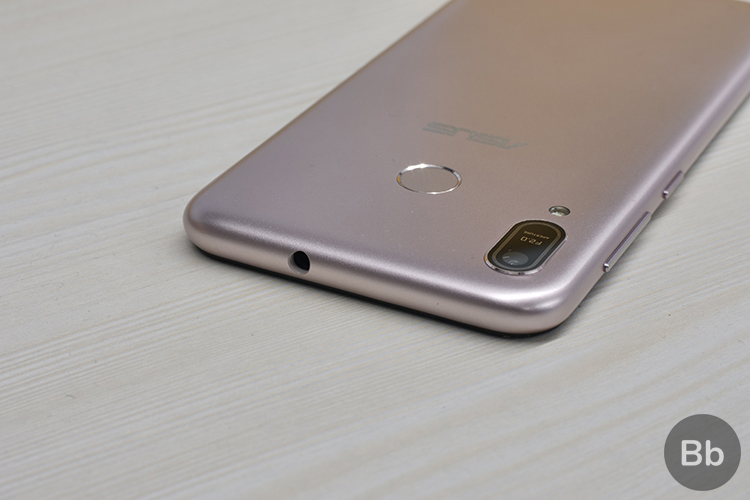
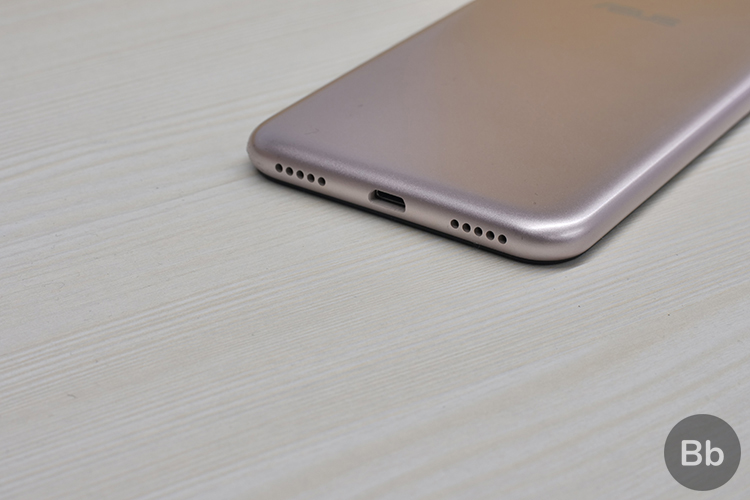
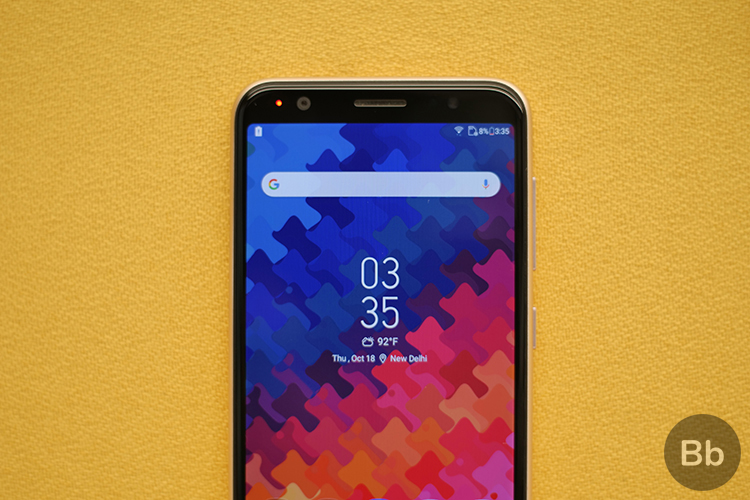











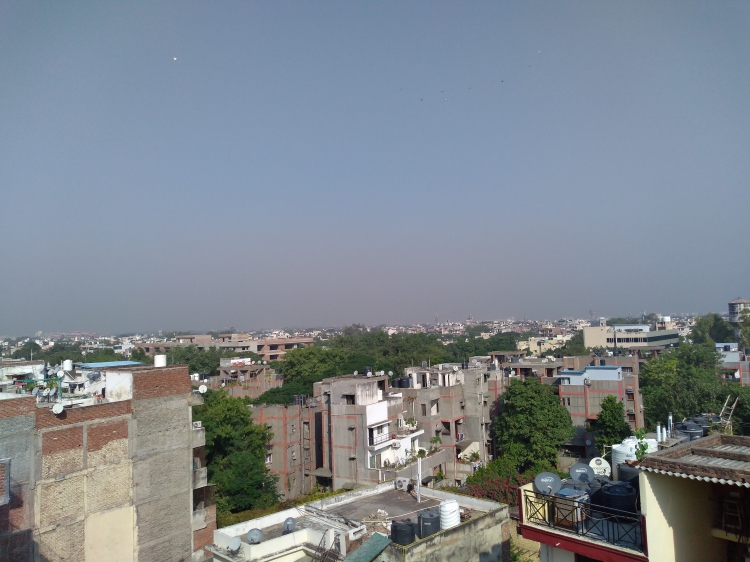








































If I were to buy the 6GB RAM version, would you recommend it? Please reply.
Hi Rahul, the ZenFone Max M1 only comes with 3GB of RAM. You’re probably confusing it with the ZenFone Max Pro M1, whose 6GB variant performs quite well and is available at a steep discount right now. So, I would recommend you go for it!